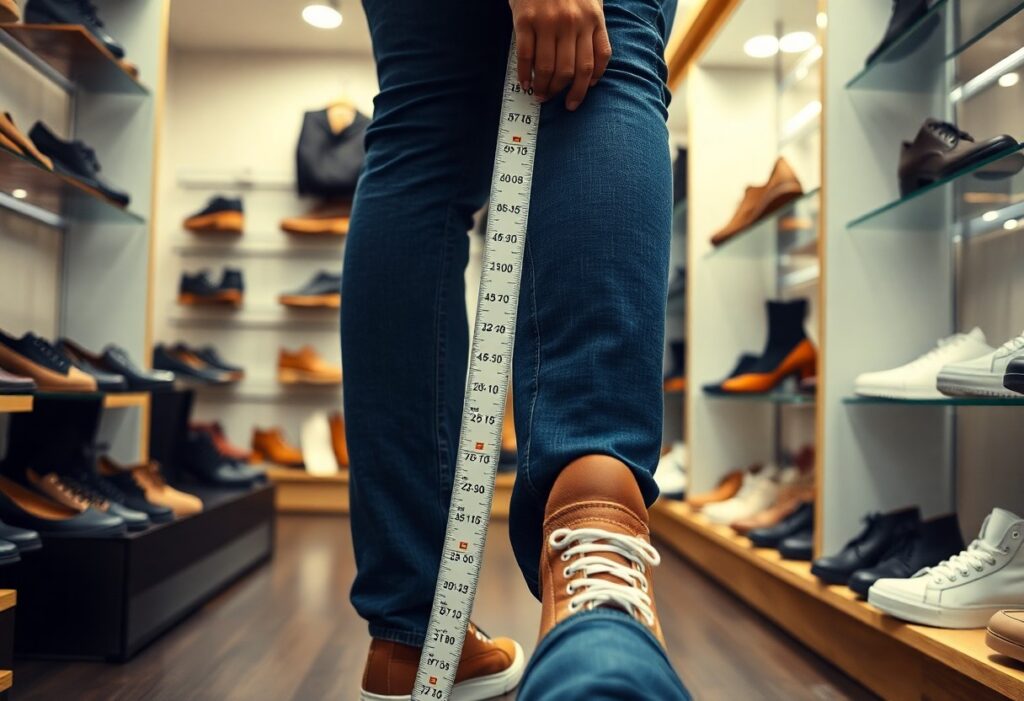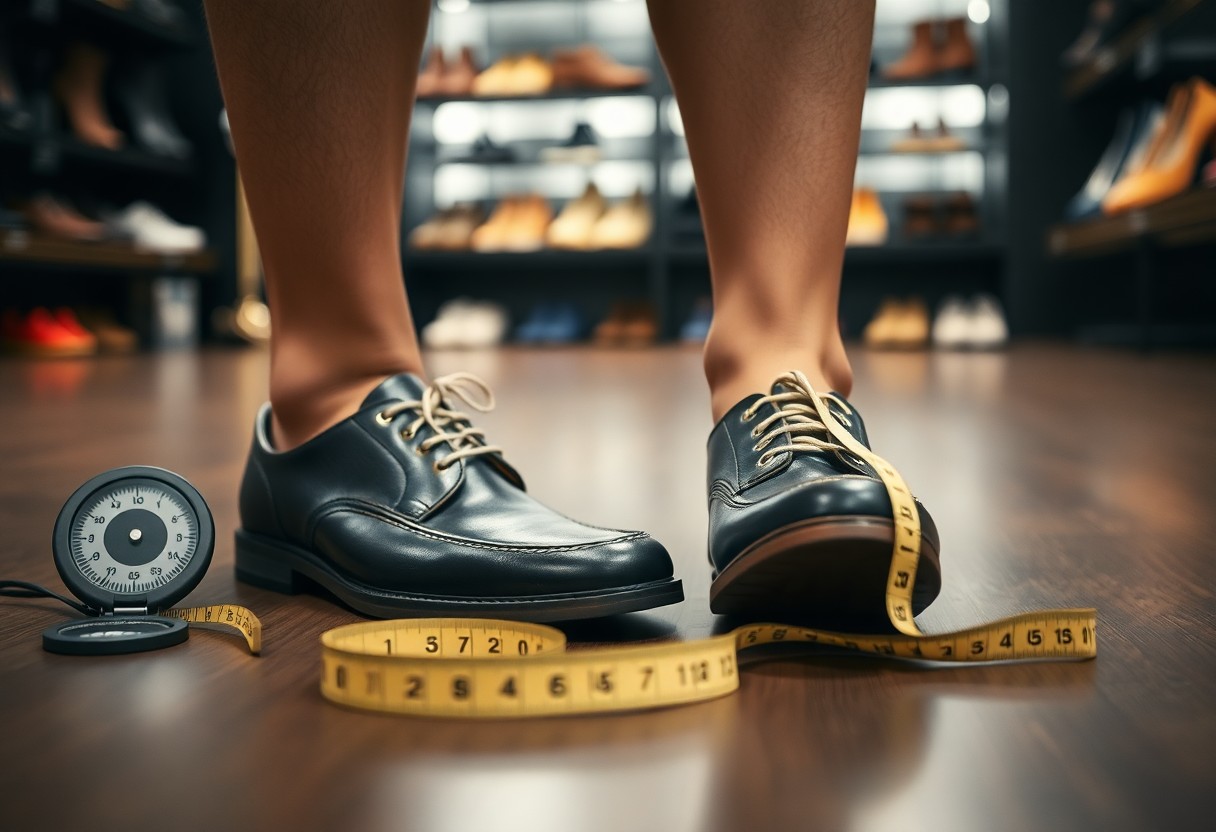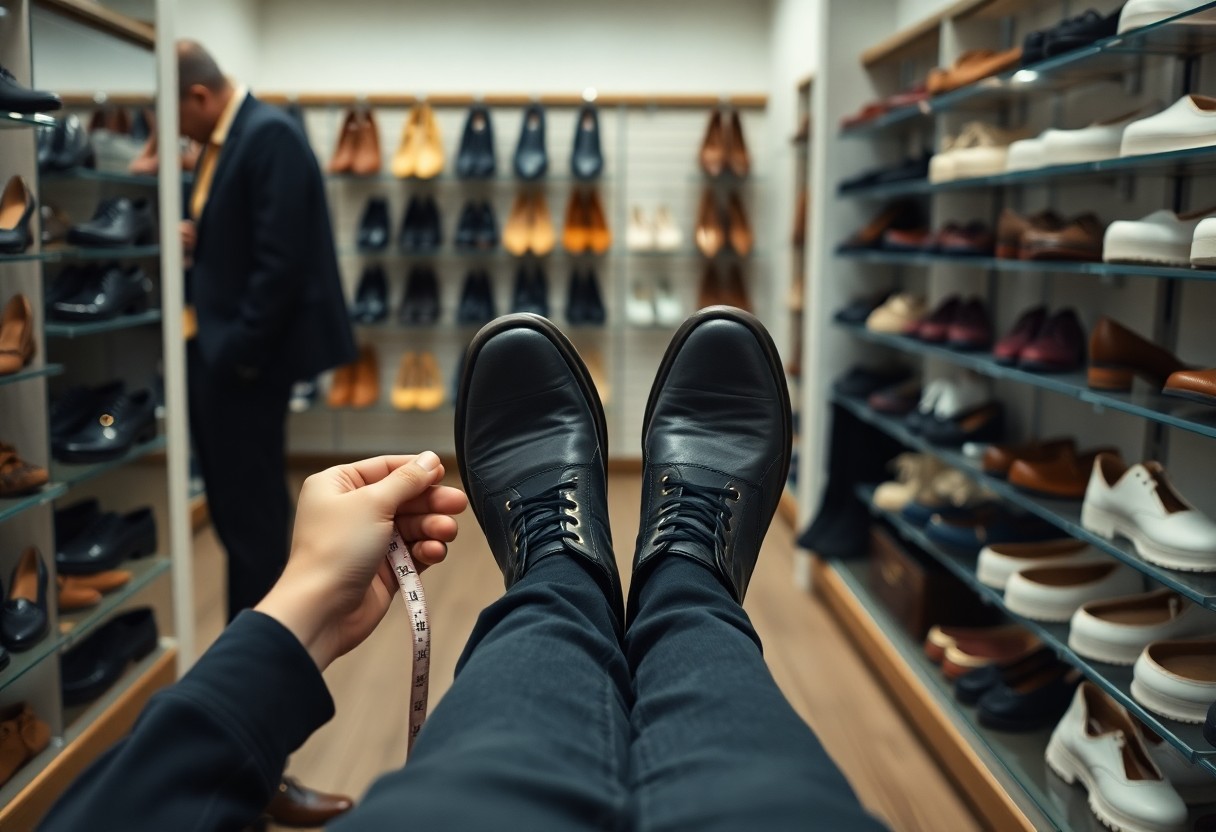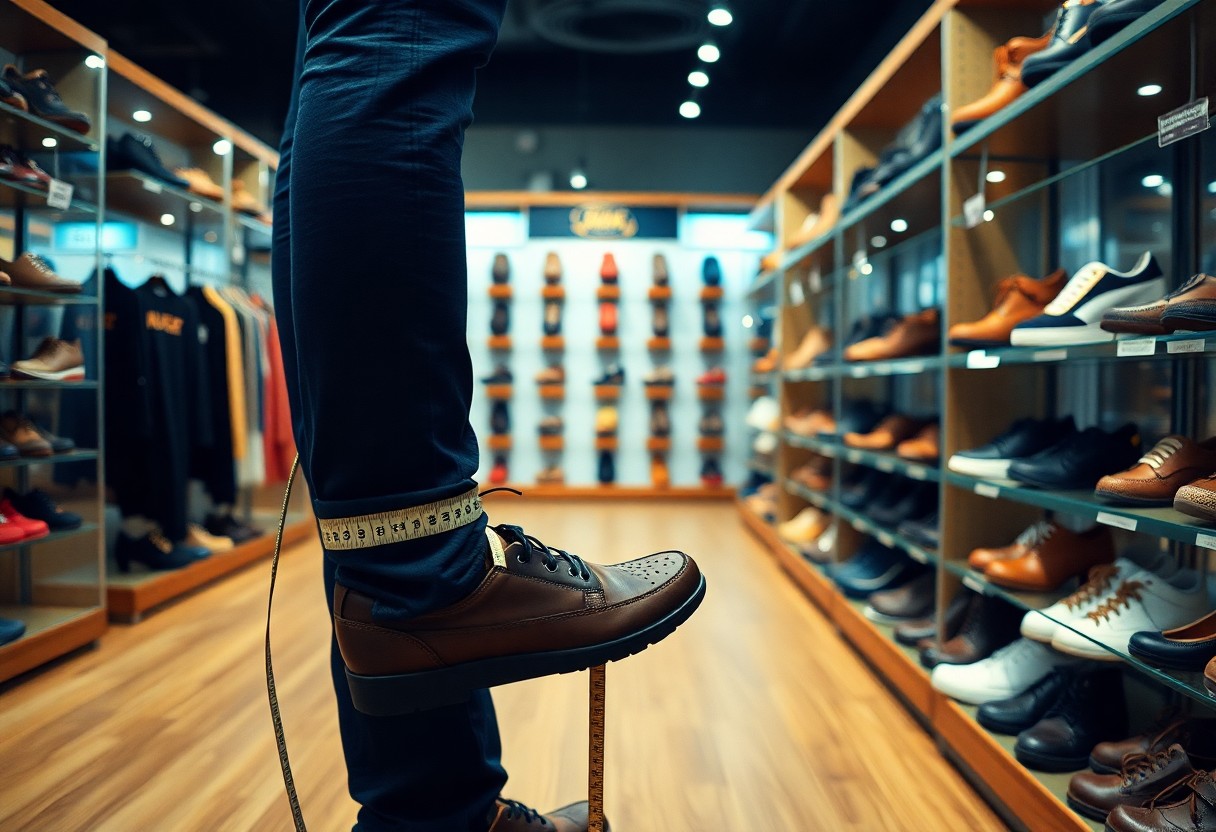
Understanding the importance of proper shoe sizing is vital for ensuring optimal foot health. Wearing shoes that are not the correct size can lead to numerous foot-related issues, from minor blisters to serious, long-lasting joint damage. Since our feet support the entire weight of our body, poorly fitting shoes can dramatically affect daily comfort, mobility, and overall physical well-being. Recognizing the signs that indicate an incorrect shoe fit is essential to preserving your foot health. Studies reveal that a staggering 75% of people suffer from foot problems due to improper shoe sizing. This detailed guide will provide you with the insights needed to assess your current footwear and choose the ideal size that perfectly suits your feet.

Spotting the Red Flags: Signs of Poorly Fitting Shoes
Taking a proactive approach to your foot health means being able to identify the warning signs associated with ill-fitting shoes. Research indicates that 60% of individuals are currently wearing shoes that do not fit properly, leading to various foot-related complications. Your footwear should offer ample space for toe movement, adequate arch support, and consistent comfort throughout the day. Failing to wear shoes that fit properly can lead to long-term damage to your feet and can even disrupt your natural walking biomechanics, which can result in additional issues.
Recognizing Physical Symptoms of Shoe Discomfort
There are several physical indicators that suggest your shoes may not fit correctly, including blisters, calluses, and corns forming on your feet. You might notice redness or bruising on your toes, particularly after prolonged periods of walking or standing. Additionally, if your toenails appear damaged or discolored, this can be a sign of improper shoe fit. If you start to observe these symptoms, it is a clear indication that your footwear is either too tight or too loose, and you should consider adjusting your shoe size immediately to avoid further issues.
Assessing Comfort Levels for the Best Shoe Fit
It’s a common misconception that new shoes should require a break-in period; however, the reality is that they should feel comfortable right away. Your toes should have sufficient room to move freely, and your heel should remain securely in place without slipping during your stride. Experiencing any form of pain or numbness in your feet is a clear indication of an improper fit and should not be ignored. Ensure that your shoes provide adequate arch support and cushioning, tailored to the specific needs of your feet.
To conduct a thorough comfort assessment, try on your shoes at various times throughout the day, as feet naturally swell and change shape. When trying on shoes, ensure there is about 3/8 to 1/2 inch of space between your longest toe and the front of the shoe. Testing your comfort on different surfaces can also be helpful. If you experience any discomfort or notice pressure points, it may be wise to explore different sizes or styles to achieve the best possible fit for your feet.

Step-by-Step Guide to Measuring Your Feet for the Perfect Shoe Size
Obtaining the correct shoe size is essential and hinges on accurately measuring both feet. It’s important to consider that your feet can vary in size by as much as half a size, and these dimensions can fluctuate throughout the day. For the most accurate results, measure your feet in the afternoon when they are likely to be slightly swollen, as this helps ensure the most comfortable fit possible and accommodates your foot’s natural shape.
Leveraging Professional Measurement Techniques for Accuracy
Professional shoe fitting generally utilizes a Brannock Device, which provides accurate measurements of your foot’s length, width, and arch length. This comprehensive three-dimensional measurement is crucial for determining the exact shoe size you need. A qualified shoe specialist will measure both feet while you are standing, taking into consideration weight distribution and the natural spreading of your feet when standing or walking. This ensures you receive the most accurate and comfortable fit available.
Simple At-Home Methods for Accurate Foot Measurement
To measure your feet at home effectively, place a piece of paper on a flat surface and trace the outline of your foot while standing. Measure the distance from your heel to your longest toe and also measure the width at the widest part of your foot. To ensure there is enough room for toe movement and comfort, add an extra 3/8 inch to these measurements.
For increased accuracy in your at-home measurements, it is advisable to measure your feet in the evening and wear the socks you plan to use with your new shoes. Ensure that there is a thumb’s width of space between your longest toe and the shoe’s tip; this allowance is critical for preventing toe injuries and promoting natural foot movement while walking.
Avoiding Common Mistakes When Sizing Shoes
Many individuals mistakenly believe they know their correct shoe size, yet studies show that up to 60% of people wear shoes that are not the correct size. Common errors include sticking to the same shoe size for years, neglecting width measurements, and ignoring size discrepancies between your two feet. These mistakes can lead to serious foot problems and significant discomfort, making it essential to stay informed about proper sizing practices.
Navigating Size Variations Across Different Shoe Brands
Inconsistencies in sizing among different shoe brands can significantly impact your comfort level. For example, a size 8 in one brand may feel more like a size 9 in another due to variations in manufacturing standards and design philosophies. Always try on shoes regardless of the size indicated on the label, as these discrepancies can have major implications for your foot health and overall comfort.
Timing is Everything: When to Shop for Shoes
The timing of your shoe shopping is crucial for finding the right fit. Your feet naturally swell throughout the day, expanding by as much as half a size larger by the evening. Shopping in the afternoon or evening gives you the best chance to find a fit that accommodates your daily needs and activities, ensuring your shoes remain comfortable throughout the day.
Additionally, your feet may expand during physical activities or in warmer weather conditions. Buying shoes early in the day often leads to tight-fitting footwear that may become uncomfortable later on. Always remember to maintain a thumb’s width of space between your longest toe and the shoe’s tip when trying on new shoes in the afternoon.

Exploring the Health Impact of Wearing Proper Shoe Sizes
Your choice of shoe size can significantly affect your overall health. Wearing shoes that do not fit properly can have repercussions that extend throughout your entire body, from your toes to your spine. Research suggests that 72% of individuals experience foot-related health issues as a result of wearing incorrect shoe sizes, which can lead to altered walking patterns and subsequent posture problems that affect your quality of life.
Immediate Effects of Wearing Ill-Fitting Shoes
In terms of immediate comfort and health, wearing shoes that are the wrong size can cause blisters, corns, and painful pressure points. You may also experience foot fatigue, strain in the ankles, and diminished balance. These issues can disrupt your daily activities, causing discomfort while walking, with 85% of individuals reporting immediate discomfort when wearing poorly fitting shoes.
Long-Term Consequences of Wearing Shoes That Don’t Fit
Long-term use of shoes that do not fit properly can lead to permanent foot deformities, including conditions such as bunions, hammer toes, and plantar fasciitis. Changes in your walking pattern may occur as you adapt to discomfort, potentially leading to knee, hip, and back issues. Research indicates that 60% of chronic foot problems can be traced back to poorly fitting shoes, highlighting the importance of choosing the right size.
The repercussions of wearing the wrong shoe size extend beyond just foot health. You may experience poor posture, reduced mobility, and chronic pain. Medical studies show that proper shoe fit can prevent up to 80% of common foot issues and enhance your overall quality of life. Remember, the shoes you choose today can have lasting effects on your foot health for years to come.
Special Considerations for Different Life Stages and Health Conditions
It’s imperative to understand that your feet require special attention during various life stages and health conditions. Elements such as age, weight fluctuations, and specific medical conditions can significantly influence your shoe size. Regular foot measurements are essential, as wearing the incorrect size can lead to serious foot problems and reduced mobility over time.
Age-Related Changes in Foot Size and Shape
Beyond the natural aging process, your feet undergo noteworthy changes as you grow older. As you age, your feet may become wider and flatter due to a loss of elasticity in tendons and ligaments. Research indicates that foot size can increase by half a size every decade after age 40. To ensure a proper fit, it is advisable to measure your feet annually and adjust your shoe size accordingly.
Health Conditions That Affect Shoe Size
Your health status plays a significant role in determining your shoe size. Conditions such as diabetes, arthritis, and edema can lead to noticeable foot swelling, necessitating adjustments in shoe size and fit. For individuals dealing with these conditions, paying close attention to shoe fit is key to preventing complications and ensuring comfort.
Furthermore, certain medications may cause foot swelling as a side effect. Poorly fitting shoes can exacerbate existing medical conditions and introduce new problems. For individuals with diabetes, regular foot inspections are crucial, and it’s vital to ensure that shoes provide adequate space and support. Research has shown that appropriate footwear can lower the risk of diabetic foot complications by up to 50%, underscoring the importance of choosing the right shoes.
Comprehensive Strategies for Effective Shoe Shopping
Despite popular misconceptions, successful shoe shopping requires careful attention to detail. Your foot size can fluctuate throughout the day, making afternoon shopping the ideal choice when your feet are at their largest. Given that your feet naturally expand during daily activities, this timing will yield the most accurate fit measurements, ensuring long-term comfort.
Essential Tips for Achieving a Proper Shoe Fit
Contrary to common belief, achieving the right fit involves more than just measuring the length of your feet. Here are some critical considerations to keep in mind to ensure a proper fit:
- Ensure a thumb-width space exists between your longest toe and the shoe tip for comfort
- Confirm that arch support aligns with your foot type to promote health
- Try on shoes with your regular socks for the best fit possible
- Walk around to test heel grip and overall comfort
Any discomfort experienced during the initial fitting is likely to worsen with extended wear, so it’s critical to address these issues proactively.
Knowing When to Replace Your Shoes
Recognizing the right time to replace your shoes is essential for maintaining foot health. Look for worn treads, uneven sole wear, or when you have logged 400-500 miles in athletic footwear.
When your shoes display these warning signs, do not hesitate to replace them: visible creasing in the midsole, loss of cushioning, or wear in the interior lining. Your feet require reliable support every 8-12 months for daily-wear shoes, and even more frequently for athletic footwear. Continuing to wear worn-out shoes can lead to severe foot pain and injury, so prioritize replacing them when necessary.
Commonly Asked Questions Regarding Shoe Sizing
Q: How can I tell if my shoes are too tight during regular wear?
A: Be attentive to these clear indicators: numbness or tingling sensations in your toes, blisters developing on your heels or toes, and visible red marks on your feet after removing your shoes. Your toes should have ample space to wiggle freely, and your heel should remain secure without slipping during movement. If you notice pressure points or discomfort after wearing shoes for just a few hours, it’s a strong indication that your shoes are too tight.
Q: When is the best time of day to measure foot size and try on new shoes?
A: The optimal time to measure your feet and try on new shoes is in the late afternoon or evening. Feet naturally swell throughout the day, reaching their largest size by evening. This timing ensures that you select shoes that will fit comfortably even when your feet are at their fullest. Always remember to measure both feet, as one foot is often slightly larger than the other.
Q: How much space should be present between my longest toe and the front of the shoe?
A: You should allow for approximately 3/8 to 1/2 inch (or thumb width) of space between your longest toe and the shoe tip. This gap allows for natural foot movement while walking and helps prevent toe injuries. Your toes should never touch the front of the shoe while standing or walking. To check this, stand up and slide your finger behind your heel – it should fit snugly without feeling tight.
The Article How to know if you’re wearing the right shoe size signs and tips for a perfect fit appeared first on My Shoes Finder
The Article Signs and Tips for Knowing Your Right Shoe Size Was Found On https://limitsofstrategy.com


Your exploration of proper shoe sizing truly resonates with me. It’s astonishing how many of us overlook this critical aspect of foot health, often prioritizing aesthetics over comfort. Having personally experienced the repercussions of wearing the wrong size—soreness and blisters that disrupted my daily activities—I understand the importance of recognizing those red flags.
I completely relate to your experience with shoe sizing and the discomfort that comes with it. It’s surprising how many of us are willing to sacrifice comfort for style, especially when it comes to footwear. I used to think that I could wear the trendiest shoes without considering fit, only to face the consequences later. It really brought home the point that our feet deserve just as much attention as any other part of our health.
I totally get what you mean about the balance between comfort and style with shoes. It’s a tough call sometimes, especially with so many brands prioritizing aesthetics over fit. I used to make similar choices—those beautiful heels that just looked so good but left my feet crying by the end of the night. It got me thinking about how our society often equates beauty with a bit of pain, which is a weird standard to uphold.
You’ve hit on an interesting point about the beauty-pain connection. It’s fascinating how we often seem to accept discomfort as a trade-off for looking good, especially in footwear. Those moments when we realize that stunning pair of heels doesn’t just elevate our outfit but also places a toll on our feet make for a relatable struggle. Comfort and style shouldn’t have to feel like a tug-of-war, but unfortunately, many brands lean towards looks at the expense of wearability.
It’s great to hear that my experience resonated with you. It’s fascinating how footwear trends can sometimes overshadow the basic principle of comfort. I remember being drawn in by a stunning pair of shoes, only to end up regretting it after a short walk. It’s a real eye-opener about how we often prioritize style over our well-being.
I can totally relate to that experience too. It’s interesting how we often prioritize the look of shoes over how they feel, especially since so many styles seem to emphasize aesthetics over comfort. I remember a phase when I really liked wearing those pointed-toe flats that everyone seemed to rave about, but I quickly learned they were not made for walking—or standing, for that matter.
It’s so true. I think we’ve all fallen into the trap of choosing shoes based on looks rather than comfort. I had a similar phase with those chunky platform sneakers that were everywhere. They looked cool, but I ended up with sore feet after just a couple of hours of wearing them. It’s funny how trends can sometimes overshadow the practical side of footwear.
It’s interesting how much emphasis we place on style, yet tend to overlook how critical proper fit is, especially with shoes. I remember chasing after trends myself, only to pay the price with sore feet. It’s a common trap to think we can just power through the discomfort for the sake of looking good.